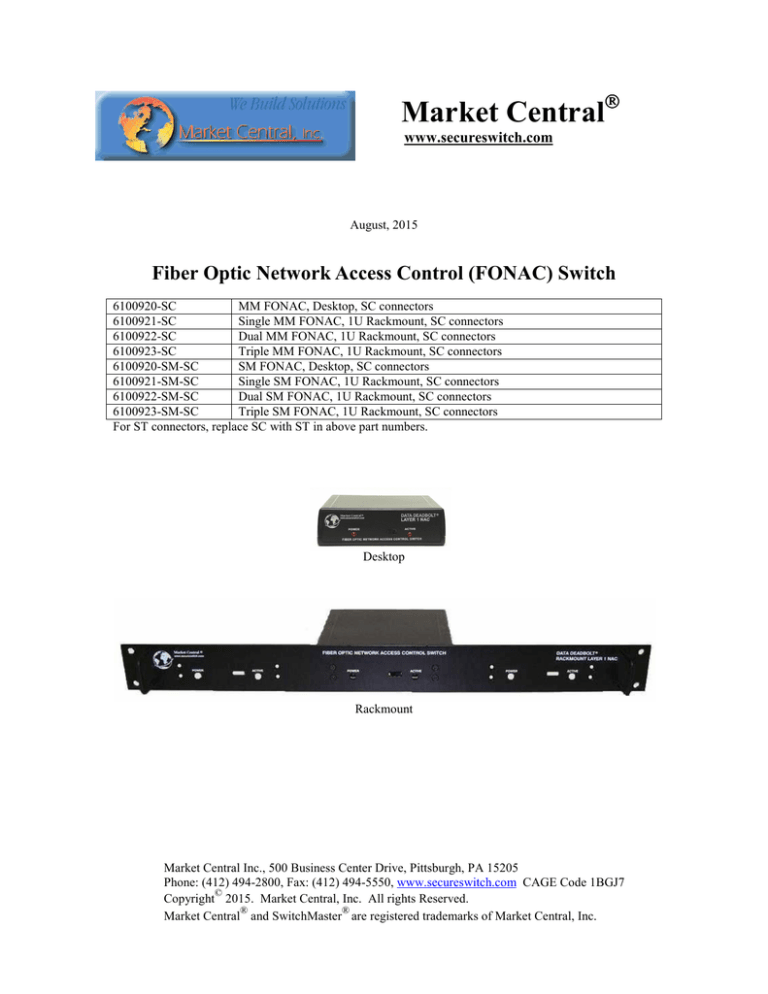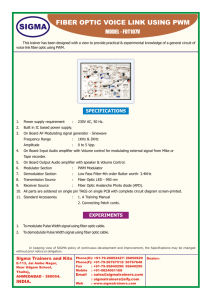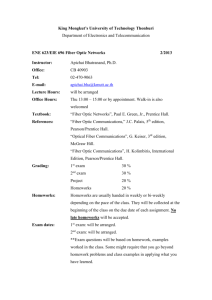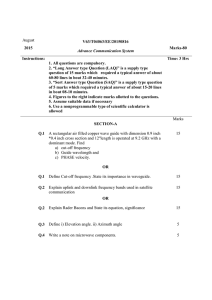
Market Central
www.secureswitch.com
August, 2015
Fiber Optic Network Access Control (FONAC) Switch
6100920-SC
MM FONAC, Desktop, SC connectors
6100921-SC
Single MM FONAC, 1U Rackmount, SC connectors
6100922-SC
Dual MM FONAC, 1U Rackmount, SC connectors
6100923-SC
Triple MM FONAC, 1U Rackmount, SC connectors
6100920-SM-SC
SM FONAC, Desktop, SC connectors
6100921-SM-SC
Single SM FONAC, 1U Rackmount, SC connectors
6100922-SM-SC
Dual SM FONAC, 1U Rackmount, SC connectors
6100923-SM-SC
Triple SM FONAC, 1U Rackmount, SC connectors
For ST connectors, replace SC with ST in above part numbers.
Desktop
Rackmount
Market Central Inc., 500 Business Center Drive, Pittsburgh, PA 15205
Phone: (412) 494-2800, Fax: (412) 494-5550, www.secureswitch.com CAGE Code 1BGJ7
©
Copyright 2015. Market Central, Inc. All rights Reserved.
®
®
Market Central and SwitchMaster are registered trademarks of Market Central, Inc.
Market Central, Inc.
1. Specifications
Connectors: (2) duplex ST or duplex SC depending on model, (1) 3.5-mm power input, (1) Six position
terminal block.
Data Rates: Transparent to optical signal rates and formats
Switching Speed: less than 1 second typical
Optical Wavelength: 850 and 1310 nanometers (multimode); 1310 and 1550 nanometers (single mode)
Insertion Loss: 2.0 dB maximum (multimode); 1.5 dB maximum (single mode)
Optical Isolation: 35 dB minimum (multimode); 55 dB minimum (single mode)
Temperature: 32 to 158ºF (0 to +70ºC) operating; 14 to 158ºF (-10 to +70ºC) storage
Relative Humidity: Up to 80%, non-condensing
Mean Time Between Failures:
100,000 hours or 1,000,000 cycles
Power: 100-240VAC, 50/60-Hz wall mount supply, 12VDC output
Size: 5.5”D x 5.1”W x 1.5”H - desktop,
6.7”D x 19”W x 1.75”H - 1U rackmount
Weight: 2 lb. - desktop, 7 lb. rackmount with 3 switches
Remote Control Inputs: External dry contact not to exceed 100 ohms resistance including cable.
Status Relay Contact Rating: 30 VDC, 1A maximum (resistive)
2. Introduction
The Fiber Optic Network Access Control Switch is a non-latching full-duplex optical switch. It is used to
provide network access at the user’s discretion.
The switch operates with a unique switching mechanism. When you connect (short) Pin 1 to Pin 2 on the
terminal strip located on the back of the unit, the internal optical mirror mechanism will provide a
connection path between port A and port B. The front panel LED will illuminate to indicate that the
connection path is active. And since this is a non-latching switch, if power is lost or the Pin 1 to 2
connection on the terminal strip is removed, the Fiber Optic Network Access Control Switch will revert to
the inactive connection state (no optical path between port A and port B). There is a slide switch on the
front panel, which operates in parallel with the terminal contact. This switch allows local control of the
Fiber Optic Network Access Control Switch.
Note: The slide switch when in the override position provides a connection between pins 1 and 2 on the
terminal contact which could be used to activate a set of remote contacts on a secondary device.
The terminal block on the rear of the unit also provides 3 signal pins for remote status indication to allow a
programmable controller or similar device to determine the status of connection path through the Fiber
Optic Network Access Control Switch.
Fiber Optic Network Access Control Switch
Page 2 of 5
Market Central, Inc.
3. Installation
Place the switch in a location relatively free from vibration and mechanical disturbances.
Connect your fiber optic cables to Port A and Port B. Note that the switch supports separate transmit and
receive paths, so you must be consistent when connecting the fiber pairs to the switch.
If using a remote contact to control the switch, connect the remote contact to the terminal block. If using a
remote status indicator, connect the remote status indicator to the terminal block. Refer to table 3.1 for
terminal block pin assignment.
Note: The remote control circuit including cable and external dry contact closure cannot exceed 100 ohms
resistance.
Apply power to the fiber optic network access switch using the 12 VDC power supply provided. The
Power LED should illuminate to indicate that the unit is energized. The Active LED will illuminate when
the fiber optic network access switch is active (port A connected to port B).
Table 3.1 - Terminal Block (Pin 1 on the Left)
Pin 1
Active Contact
Pin 2
Ground
Pin 3
Not Used
Pin 4
Status Relay N.C.
Pin 5
Status Relay COM
Pin 6
Status Relay N.O.
NOTE: Pin 4 & 5 are connected in the inactive state, while pins 5 & 6 are connected in the active state.
4. Operation
Operation is easy. Apply power to the unit by providing a source of AC voltage to the wall mount power
supply. Use either the override slide switch or the terminal block contacts to connect (short) the Active
contact to ground. The Fiber Optic Network Access Control Switch is active (Port A connected to Port B) if
power is applied and either the override switch is ON or the terminal block Active contact is shorted to the
Ground contact. The Fiber Optic Network Access Control Switch is in the inactive state (Port A not
connected to Port B) if power is removed or both the override switch is in the OFF position and the
terminal block Active contact is not connected to the Ground contact. (See table below)
The switch uses an optical switching mechanism to direct the light beams between Port A and Port B.
There’s no optical-to-electrical conversion. The only electrical activity is the DC power required to move
the precision mirror mechanism and to power the LEDs. A set of relay contacts are provided at the
terminal block for remote status.
Network
Access
Power
Override
Switch
Remote
Contact
Disabled
OFF
X
X
Disabled
ON
OFF
OPEN
Enabled
ON
ON
X
Enabled
ON
X
CLOSED
Fiber Optic Network Access Control Switch
Page 3 of 5
Market Central, Inc.
The Fiber Optic Network Access Control Switch can be used in conjunction with the SecureSwitch® Fiber
Optic A/B/C Switch Revision B to connect the selected optical network connections and disconnect all
other connections when the PLC controller or similar device actively selects one of the networks (A, B, or
C). One fiber optic port on each FONAC would connect to the appropriate A, B, or C port on the Rev B
SecureSwitch, while the other port on each FONAC would connect to the appropriate secure/non secure
optical network. For clarity reasons, the diagram below shows only the control connections required for this
configuration.
Fiber Connections
Rev B
FONAC
2
G A B C
FONAC
1
2
FONAC
1
2
1
PLC
G
The Fiber Optic Network Access Control Switches can also be driven using the remote status dry contact
closures from the SecureSwitch Rev B. In the example shown below, when the PLC Controller switches
the Rev B SecureSwitch to port A, the remote status Dry Contact outputs A-A on the SecureSwitch will
activate the appropriate FONAC, which will then optically connect the associated secure/non-secure
network to port A on the SecureSwitch. The other FONACs would remain in the inactive state, causing the
other fiber optic network connections to remain disconnected from the Rev B SecureSwitch.
FONAC
PLC
2
1
A
A
Rev B
G
Fiber Optic Network Access Control Switch
G
A
B
C
Page 4 of 5
Market Central, Inc.
5. Troubleshooting
5.1 Calling Your Supplier
If you determine that your Fiber Optic Network Access Control Switch is malfunctioning, do not attempt to
alter or repair the unit. It contains no user-serviceable parts.
Contact Market Central, Inc. at (412) 494-2800
Before you do, make a record of the history of the problem. We will be able to provide more efficient and
accurate assistance if you have a complete description of the problem,
including:
•the nature and duration of the problem.
•when the problem occurs.
•the components involved in the problem.
•any particular applications that, when used, appears to create the problem or make it worse.
5.2 Shipping and Packaging
If you need to transport or ship your switch:
•Package it carefully. We recommend that you use the original container.
•If you are shipping the switch for repair, make sure you include everything that came in the original
package. Before you ship, contact Market Central, Inc. to get a Return Materials Authorization (RMA)
number.
MARKET CENTRAL, INC.
WARRANTY AND LIMITATION OF LIABILITY
Market Central, Inc. (“Market Central”) warrants that the products manufactured and sold by it or by one of its authorized
resellers will, when sold, be free of defects in workmanship or material under normal service and use. Products which have been
changed or altered in any manner from their original design, or which are
improperly or defectively installed, serviced or used, are not covered by this warranty. If any failure to conform to this warranty
becomes apparent during a period of one (1) year after date of sale, Market Central shall, upon prompt, written notice and compliance
by the
customer with such instructions as it shall give with respect to the return of defective products or parts, correct such non-conformity
by repair or replacement of the defective part of parts. Correction in the manner provided above shall constitute a complete fulfillment
of all obligations and liabilities of Market Central with respect to the quality of said products. THE FOREGOING WARRANTY IS
EXCLUSIVE AND IN LIEU OF ALL OTHER WARRANTIES OF QUALITY, WHETHER WRITTEN, ORAL OR IMPLIED,
INCLUDING, WITHOUT LIMITATION, ANY WARRANTY OF MERCHANTABILITY OR FITNESS FOR PURPOSE.
THIS WARRANTY AND THE OBLIGATIONS AND LIABILITIES OF MARKET CENTRAL HEREUNDER ARE
EXCLUSIVE AND IN LIEU OF AND BUYER HEREBY WAIVES ALL OTHER REMEDIES, WARRANTIES, GUARANTIES
OR LIABILITIES, EXPRESS OR IMPLIED, ARISING BY LAW OR OTHERWISE (INCLUDING WITHOUT LIMITATION
ANY
OBLIGATIONS OF MARKET CENTRAL WITH RESPECT TO FITNESS FOR PURPOSE, MERCHANTABILITY AND
INDIRECT, SPECIAL OR CONSEQUENTIAL DAMAGES OR LOST PROFITS) OR WHETHER OR NOR OCCASIONED BY
MARKET
CENTRAL’S NEGLIGENCE. THIS WARRANTY SHALL NOT BE EXTENDED, ALTERED OR VARIED EXCEPT BY A
WRITTEN INSTRUMENT SIGNED BY A DULY AUTHORIZED OFFICER OF MARKET CENTRAL.
©
Copyright 2015. Market Central, Inc. All rights Reserved
Fiber Optic Network Access Control Switch
Page 5 of 5






